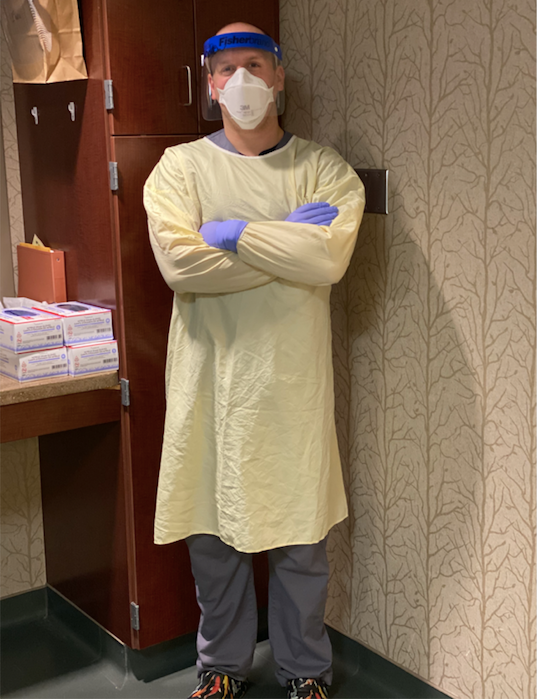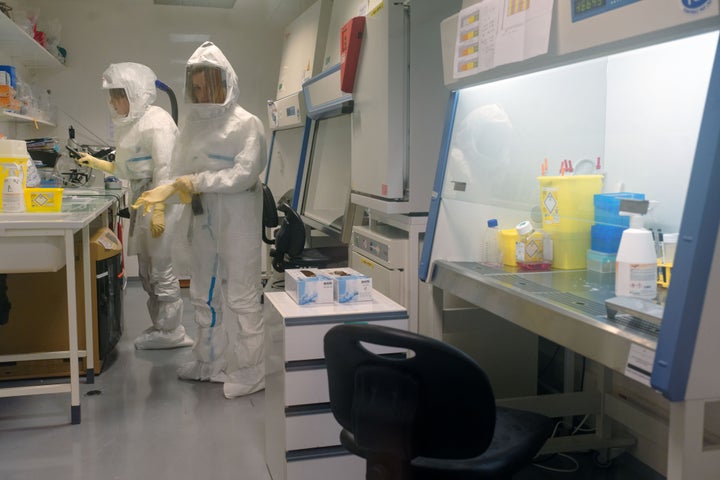Staying home can be hard, but it’s not even an option for the health care workers and scientists on the frontlines of our global effort to thwart the COVID-19 pandemic. They have to arm themselves to face potentially infected patients and deadly viruses every day.
One of those important people on the frontlines, Nebraska Biocontainment Unit nurse manager Kathleen Boulter, told HuffPost that caring for suffering people — no matter how contagious the cause of their suffering might be — is just “what we do.”
“I think all of us feel like we want to do the best we can to help contain COVID-19. We do it for our fellow humans and our friends and our families,” she said. But for Boulter and all of her colleagues to do their work successfully, they have to be incredibly careful not to contaminate themselves or others on the job.
What Health Care Workers Should Be Wearing At Hospitals
According to Saskia Popescu, a senior infection preventionist at Phoenix’s HonorHealth, tackling this disease requires “a lot of PPE,” or personal protection equipment. Popescu listed several pieces of necessary protective gear that health care providers at her hospital wear around PUIs, or patients under investigation for carrying the coronavirus: a surgical gown, gloves, respiratory protection, eye protection or a face shield, to start.
“If you have a patient that is more critically ill and is requiring what we call ‘aerosol-generating procedures,’” Popescu added, “then you want to increase the respiratory protection to what’s called an N95 respirator” ― a mask for the nose and mouth that filters out “at least 95% of airborne particles,” according to the Centers for Disease Control and Prevention.

If a patient has been brought to Boulter’s specialized biocontainment unit in Nebraska, careful precautions are taken to avoid contaminating others. “If we suspect somebody has COVID-19,” Boulter explained, nurses wear the same protective gear around that patient as they would if the patient had already tested positive.
“We don’t take any chances,” she said, so nurses don an N95 respirator mask, as well as “a face shield, an isolation gown and gloves.”
In Boulter’s unit, the fluid-resistant isolation gowns are yellow and cover nearly every inch that might be exposed to infectious diseases: “Your arms, your whole body pretty much. It goes down to just below your knees, it goes up as high as your neck and then it covers your clothing.”
What Virologists Wear In Research Labs
Columbia University virologist Angela Rasmussen researches emerging viruses, including Ebola. She told HuffPost that studying COVID-19 requires what’s known as a biosafety level three lab — and plenty of specific gear to match the risk.
“As long as the virus is infectious ― meaning that it is capable of infecting cells, it’s capable of infecting a person or an animal ― it has to stay inside BSL-3,” Rasmussen said.

For diseases that can be “transmitted by respiratory droplets,” like COVID-19, Rasmussen said either an N95 mask or a PAPR — a powered air-purifying respirator that shields the entire face — is appropriate in the lab setting. A PAPR is “basically an automatic mask that has a filter and a motor on it,” ensuring the air you’re breathing is cleared of infectious particles, she explained. If a virologist opts to wear an N95 respirator instead of the full headgear of a PAPR inside a BSL 3, they’ll also wear a face shield “to prevent any kind of exposure or splash risk.”
Like health care workers, Rasmussen said, virologists need a surgical gown, or a gown that has a plastic liner on it, to prevent contamination of their clothing. For hand protection, Rasmussen said she relies on specialized nitrile rubber gloves ― “those blue or purple gloves that you see sometimes.” Nitrile is preferable, she noted, because it’s a “little less stretchy” and even less permeable than standard latex gloves.
Resources Are Limited
For health care workers and researchers alike, protective gear is costly but life-saving — and supplies are running low. Popescu said that America’s health system was “already very stressed” by the flu season before COVID-19 hit and that the added supply chain issues caused by the pandemic have further strained resources.
“It’s stressful. There’s a lot of concern about PPE supplies,” she said.
The stockpiling of face masks and gloves by an anxious public further exacerbates the current scarcity. “Don’t be purchasing these masks when health care providers who really need them can’t get them,” Boulter said.
Buying up medical masks may be giving the public “a false sense of security,” Boulter pointed out. “If they’re worried about getting sick, and they’re so worried about getting sick that they’re willing to wear PPE out in the community, what they really need to be doing is proper hand hygiene.”
Social distancing is also a better choice for those of us who, unlike health care workers, have the luxury of not being close to sick people all day.
